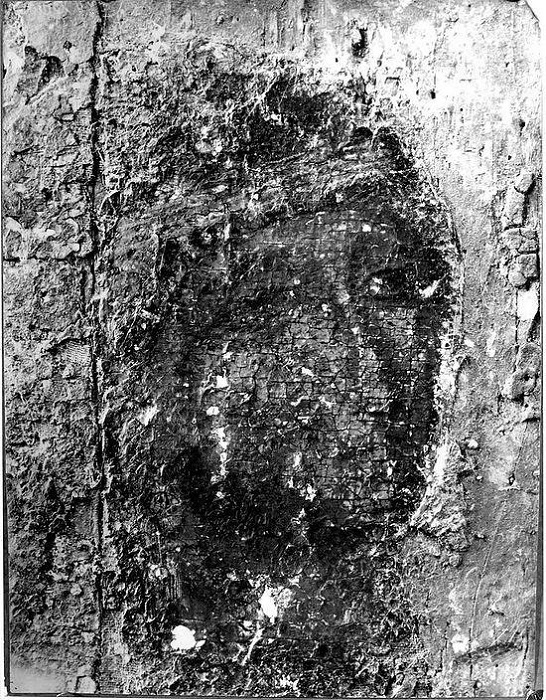
The wonderworking Bogolyubskaya icon of the Mother of God can be rightly considered one of the oldest Russian icons. It was painted about fifty years later than the Vladimir icon of the Mother of God, and it is possible to trace their direct correlation: since the Prince of Vladimir would always take the icon with him, when, according to legend, he had an apparition of the Mother of God, Andrei Bogolyubsky ordered his icon painters to paint a new icon, focusing on the Vladimir icon. This interrelation is now seen in the iconography, as the face of the Mother of God on the Bogolyubskaya icon has already been revealed (i.e. the very first painting has become visible), and its resemblance to the face of the icon, which later became known as the Vladimir icon, is evident.
About the Icon
The icon itself is large: 185×100 cm. It depicts the Mother of God without the Child, full-length, praying to the Lord, shown in the heavenly segment, and it is a unique iconographic version. The Mother of God is usually depicted holding a scroll with the following text:
-O Lord the Most Gracious, my Son and my God, I pray that divine goodness may abide in your people and that the rays of light of your glory may come down on the place I have chosen.
-O Lord Jesus Christ, my Son and my God, please bow your ear to me; for I pray for the world.
-O Heavenly King, Most Gracious and Merciful, O Lord God and Lover of Man, and the Creator of all, Lord Jesus Christ, and the Giver of all good things, Lover of Man, Son and My God, hear the prayer of Thy servant and Mother, receive every man who glorifies Thee and Me, Thy servant.
-O Lord Omnipotent, Son and My God, bow your ear and hear the prayer of Thy mother, I pray in Thy holy name, and have mercy.
Many versions of the icons depict Andrei Bogolyubsky among others, kneeling to the Mother of God. The list of people who kneel before the Mother of God changes depending on the iconographic version.

The Bogolyubskaya icon belongs to the Hagiosoritissa type (otherwise called the Deesis icon), with the difference that in the Bogolyubskaya icon the Deesis composition lost in the Hagiosoritissa icons is “restored”: it clearly depicts Christ, to whom the Mother of God is praying. The Bogolyubskaya icon depicts the Mother of God as the Intercessor and Mediator, but there are also motifs of Oranta and Hodegetria that indicates the Way for those who come.
The noted researcher N. P. Kondakov considered the creation of the Bogolyubskaya icon of the Mother of God a wonderful event: it was the first icon painted by Russian artists in Russia. Contemporary researchers suggest that the Bogolyubskaya icon was the result of joint work of Greek and Russian craftsmen.


Current Condition of the Icon
The Bogolyubskaya icon of the Mother of God can truly be called a long-suffering one: it has suffered from careless preservation, from unprofessionalism of restorers, and from other circumstances of its history. When they began to explore the color layers, it turned out that the icon was repainted in some places a great number of times. One of the restorers who investigated the chronicles and literary sources, found that the Bogolyubskaya icon of the Mother of God was repainted some 26 to 38 times, and in some places there was even a displacement of the image.
The restoration of the Bogolyubskaya icon has been going on for over a hundred years (!) intermittently. It was only recently that restorers managed to uncover the oldest iconographic layer.
There are documents of the first restoration after the removal of the silver cover – the icon was in a sad state, and the first task of the restorers of that time was to somehow save the icon. After this restoration, the icon was kept in very poor conditions, which had a deleterious impact on its current state. The restoration council developed a special methodology for preserving the Bogolyubskaya icon, and it gives hope that soon it will be saved and everyone will be able to see the beautiful ancient icon.




